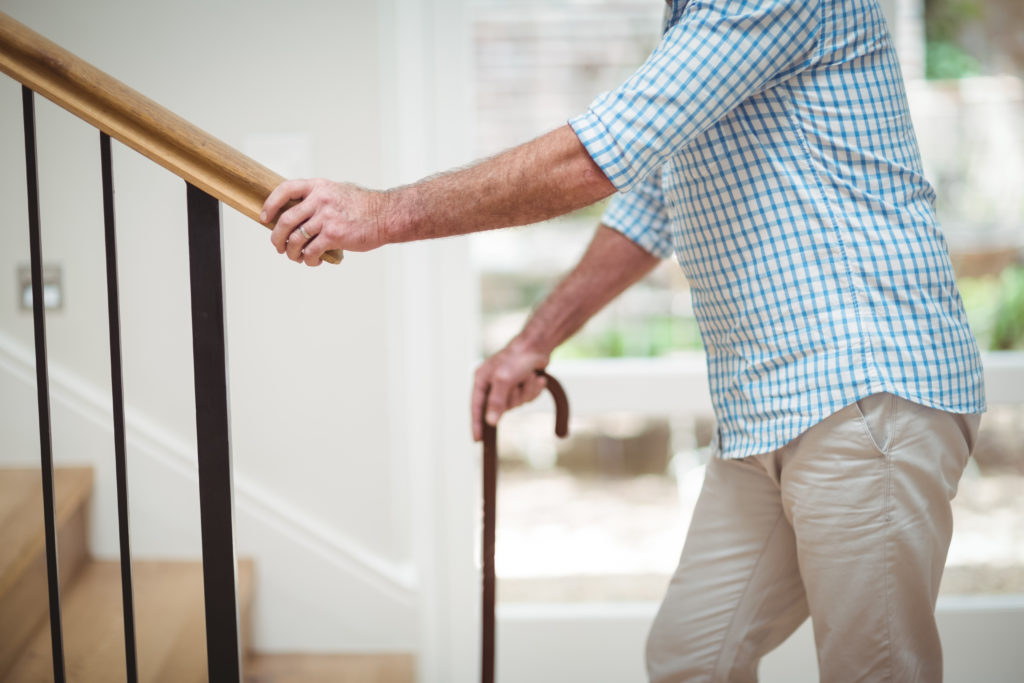In our technologically advanced world, understanding the difference between fall detection and motion detection is essential, especially for family caregivers who prioritize the safety of their loved ones. These technologies are pivotal in modern safety solutions, yet they serve distinct purposes. This article delves into these differences, offering you a clear comprehension of their roles and applications.

Understanding Fall Detection
Fall detection technologies are specifically designed to identify when a person has experienced a fall. This is crucial for the elderly or individuals with mobility issues, where falls can lead to severe injuries. Fall detection systems typically use accelerometers and algorithms to detect sudden changes in movement patterns that signify a fall has occurred.
How Does Fall Detection Work?
Most fall detection systems employ wearable devices or sensors installed in living spaces. These devices monitor abrupt shifts in motion and orientation, sending alerts to caregivers or emergency services if a fall is suspected. This prompt response can be life-saving, reducing the time between the fall and receiving medical assistance.
Exploring Motion Detection
Motion detection, on the other hand, is a broader technology used to identify any movement in a defined area. It is commonly used in security systems, smart homes, and environmental monitoring. Unlike fall detection, motion detection does not specifically identify falls but rather any movement, making it versatile for various applications.
How Does Motion Detection Operate?
Motion detectors use a variety of technologies including infrared, ultrasonic, and microwave sensors to perceive movement. They can activate alarms, trigger cameras, or even adjust lighting based on the movement detected. This technology is widely used in home security and automation to enhance safety and efficiency.
Key Differences Between Fall Detection and Motion Detection
While both technologies involve monitoring movement, their purposes and mechanisms differ significantly:
- Purpose: Fall detection is specifically for identifying falls, while motion detection tracks any movement.
- Technology: Fall detection often uses wearable devices, whereas motion detection employs various sensors.
- Application: Fall detection is crucial in elderly care; motion detection is versatile across numerous sectors.
Applications in Daily Life
The applications of these technologies are vast and impactful. Fall detection is crucial in elderly care solutions, offering peace of mind to family members. Motion detection finds its place in home security systems and fall prevention strategies, ensuring safety and security in everyday environments.
Technological Advancements in Fall and Motion Detection
The evolution of technology has significantly enhanced the capabilities of both fall and motion detection systems. AI and machine learning are being integrated to improve the accuracy and reliability of these technologies, providing more robust solutions for safety and monitoring.
Future Prospects
The future holds promising advancements in these technologies. With the integration of IoT sensors, both fall and motion detection systems are becoming more interconnected, leading to smarter and more efficient safety solutions.
Choosing the Right Technology for Your Needs
Choosing between fall detection and motion detection depends on your specific needs. For caregivers, the safety of loved ones is paramount, making fall detection a vital choice. Conversely, for home security, motion detection offers comprehensive monitoring.
Factors to Consider
Consider factors such as the environment, specific needs for monitoring, and the desired level of automation when selecting the appropriate technology. A blend of both technologies might offer the best solution for comprehensive safety and security.
Integrating Technologies for Enhanced Safety
Integrating both fall and motion detection technologies can create a more holistic safety system. This integration ensures comprehensive monitoring and quick response to incidents, significantly enhancing the safety and security of your environment.
Creating a Safer Environment
Through integration, caregivers can ensure they are alerted to falls and other movements, providing a safer environment for their loved ones. This approach combines the strengths of both technologies, offering a robust safety net.
Conclusion
Understanding the difference between fall detection and motion detection is essential for making informed decisions about safety technologies. These systems, when used effectively, can significantly enhance the well-being of individuals, particularly the elderly, offering peace of mind to family caregivers.

FAQs
What is the primary function of fall detection?
The primary function of fall detection is to identify and alert caregivers or emergency services about a fall incident, ensuring quick medical response.
Can motion detection be used for security purposes?
Yes, motion detection is widely used in home security systems to monitor and alert any unauthorized movement.
Is it possible to integrate fall and motion detection technologies?
Yes, integrating both technologies can offer a comprehensive safety solution that enhances monitoring and response capabilities.
This article contains affiliate links. We may earn a commission at no extra cost to you.






